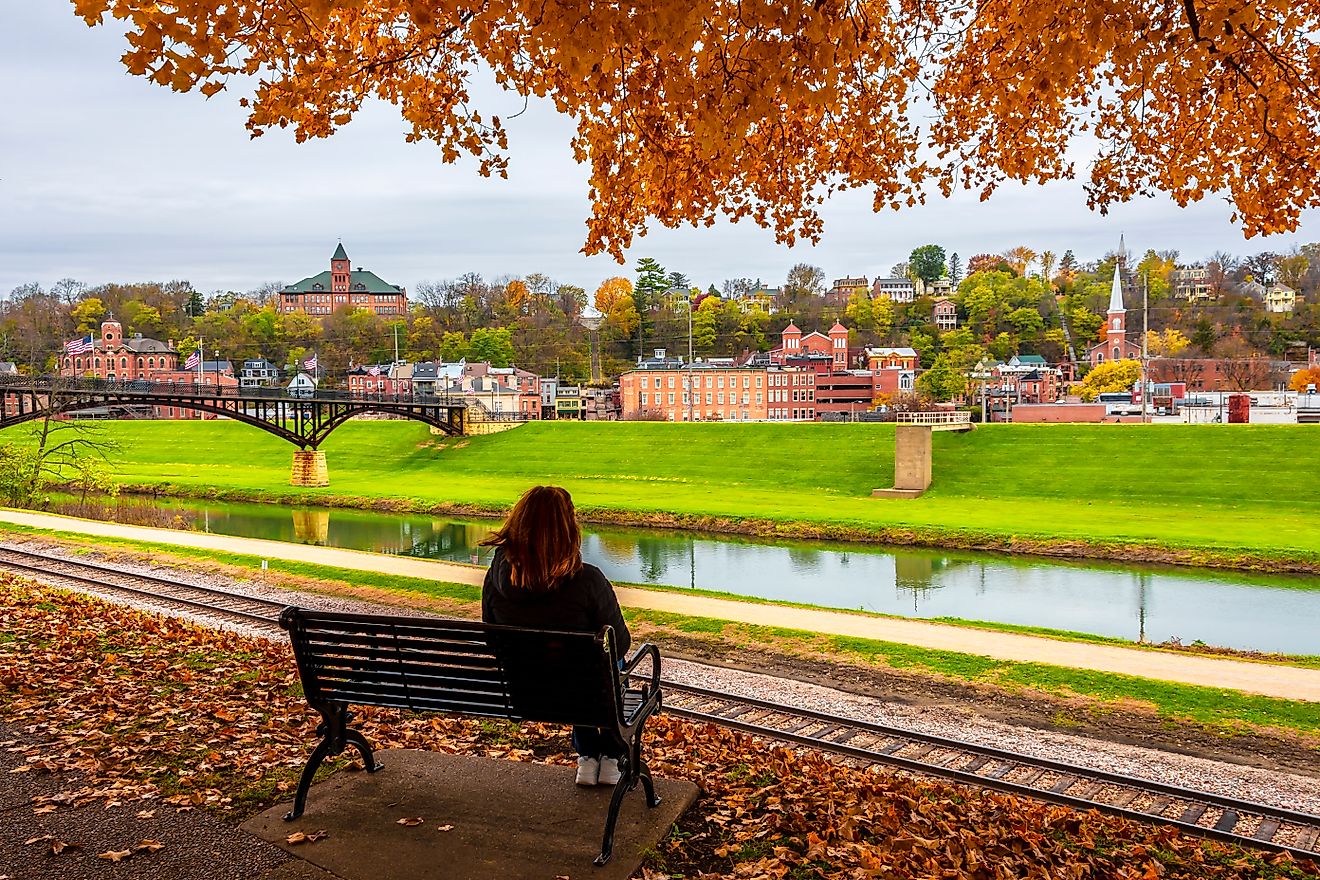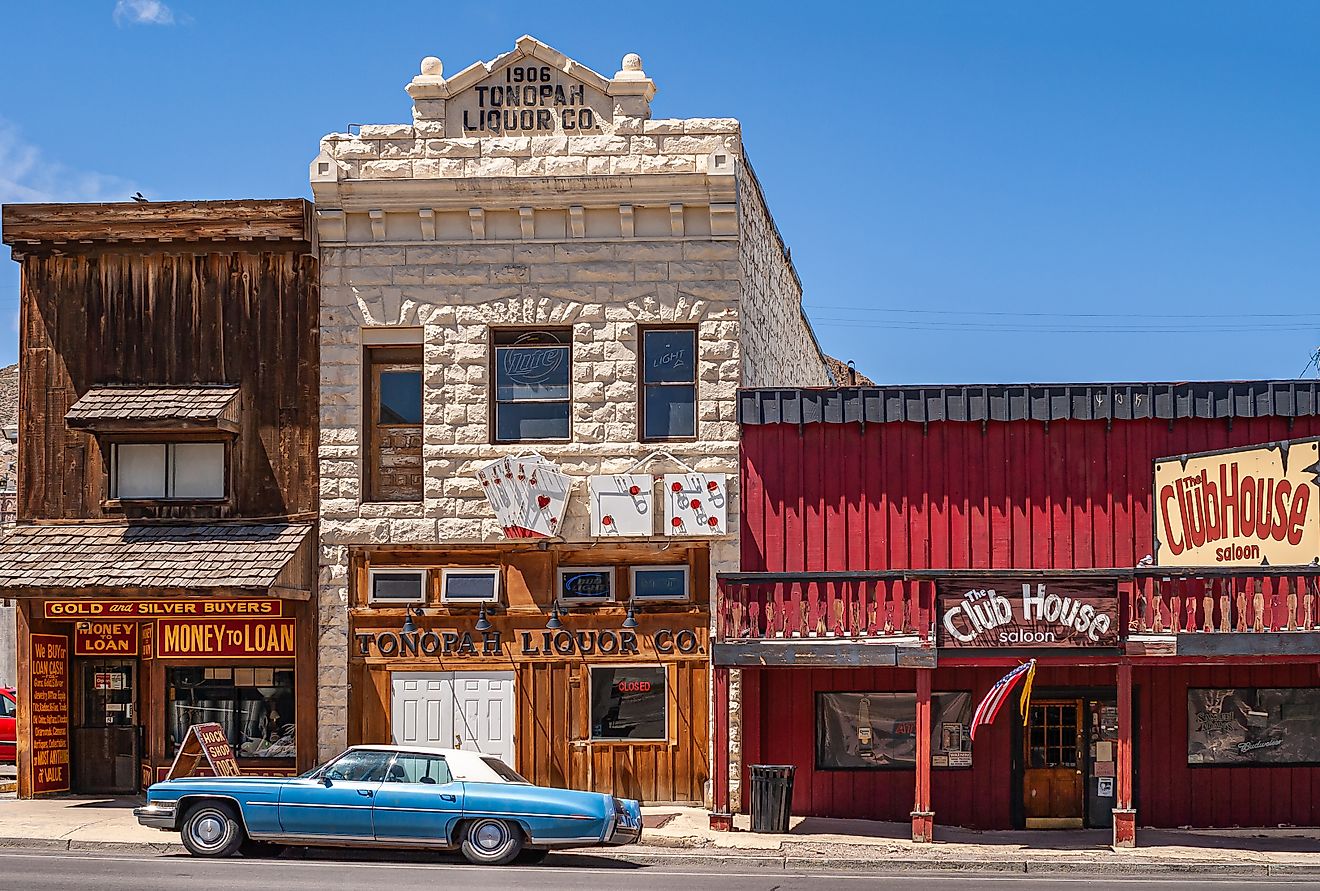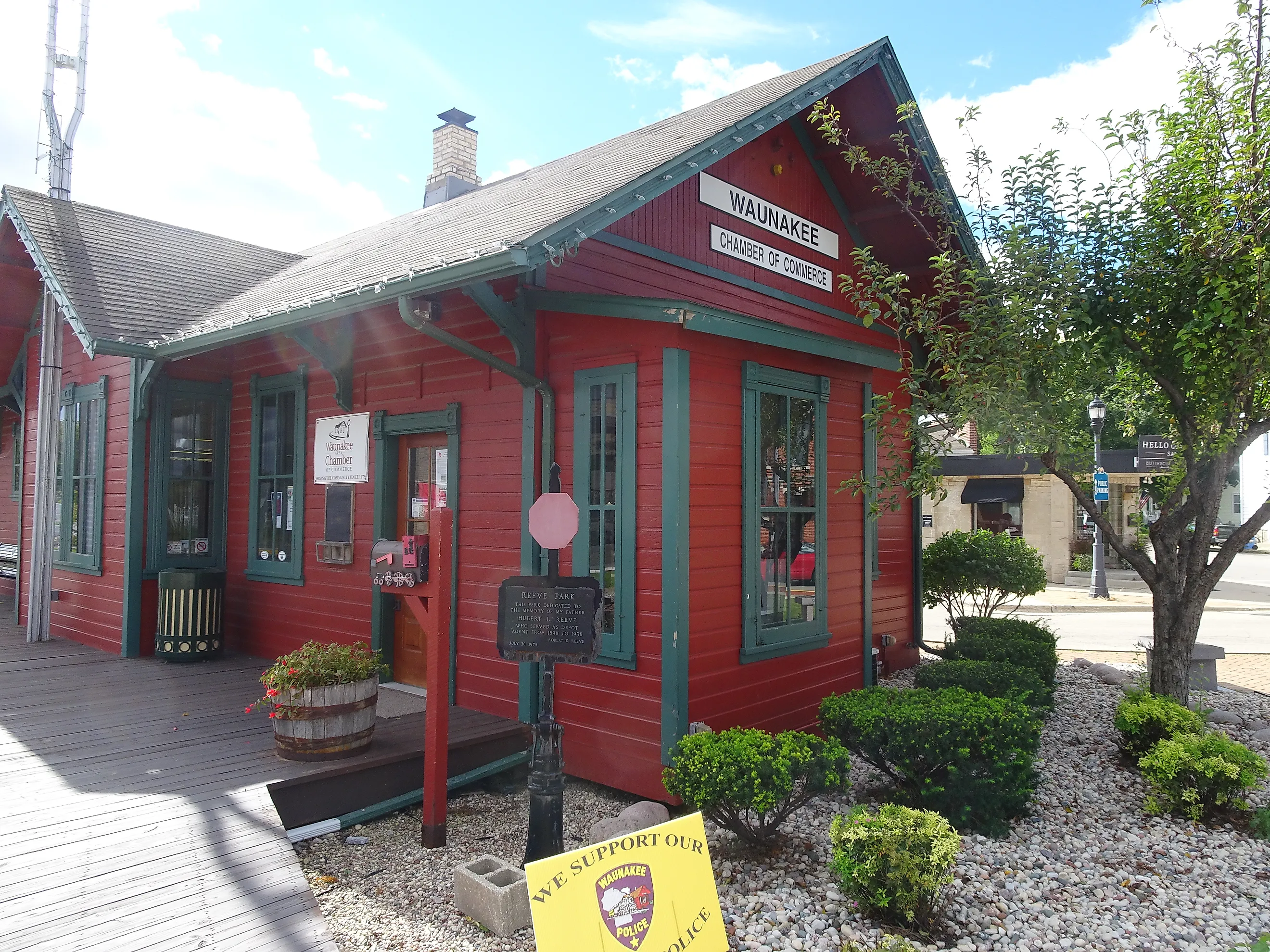
8 Safest Small Communities To Settle In Wisconsin
What if “safe” weren’t a slogan but a pattern you can see on a chart? For this guide, we treated security like a measurable local utility.
These places run on predictable routines and well-kept civic hardware. Think of a working 1930s breakwater light on Lake Michigan, a preserved 1876 covered bridge spanning a quiet creek, or a prairie conservancy with spring-fed trails inside the village limits. You’ll see rooftop beer gardens over tidy main streets and lakefront parks with accessible piers. The result is eight small Wisconsin communities where evening noise is more likely a snowplow than a siren, and where safety feels less like luck and more like planning you can verify.
Middleton
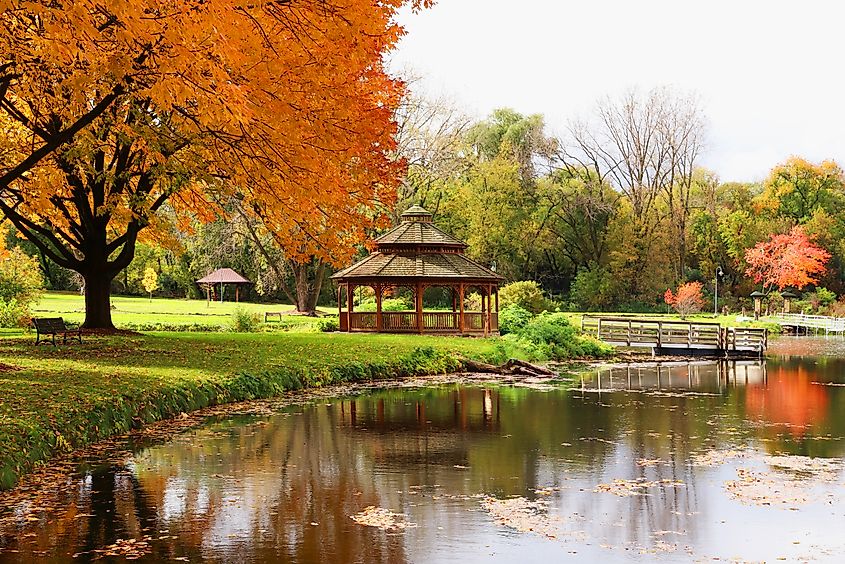
Middleton is best known as the home of the National Mustard Museum, a place that catalogs more than 6,000 mustards from over 70 countries in a tongue-in-cheek display that belies the town’s otherwise understated character. It’s a suburb of Madison, but functions with its own civic identity, rooted in stable governance, strong public infrastructure, and a long-standing reputation for safety. Middleton’s violent crime rates for aggravated assault and homicide stay consistently below both Wisconsin and national averages. The police department operates with a transparency-first model, and community engagement programs are deeply embedded in local routines.
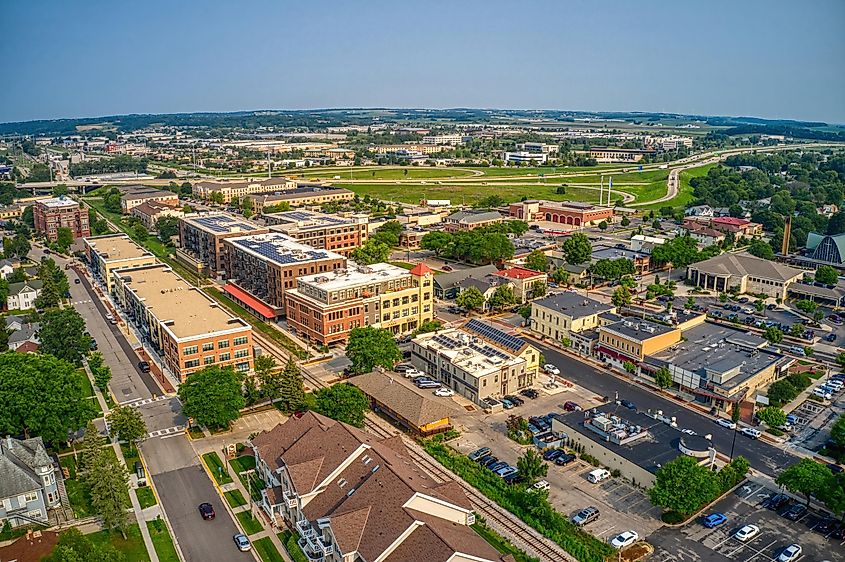
The Pheasant Branch Conservancy is the town’s most valued natural asset, offering nearly 500 acres of springs, oak savanna, and bike trails that loop through wetland corridors. The downtown is anchored by Barriques, a locally owned café and wine bar known for its unfiltered drip coffee and cellar-like seating. Longtable Beer Cafe serves regional brews alongside grilled cheese with triple cream Brie and pickled fennel. Lakeview Park, just off Allen Boulevard, includes a splash pad, formal rose garden, and accessible fishing pier on the park pond.
Verona
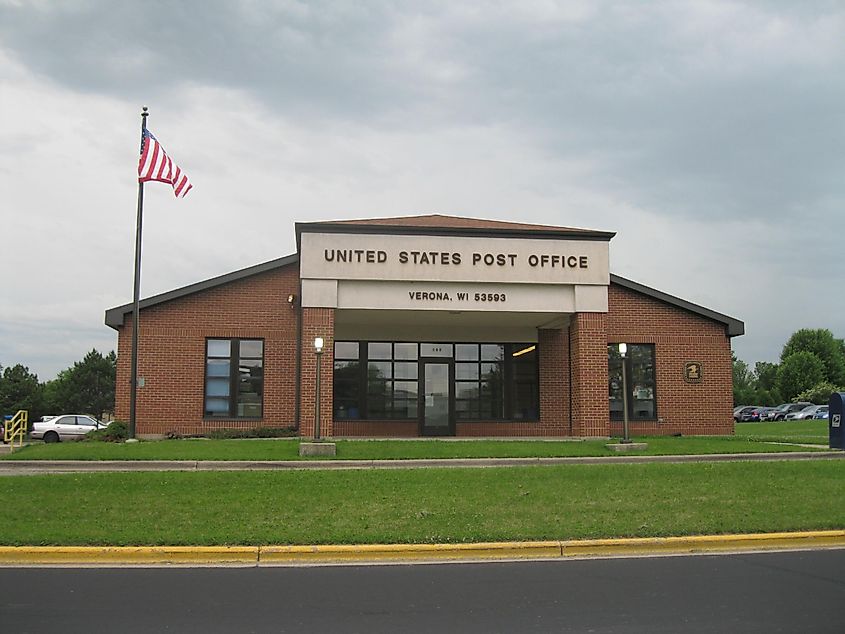
Verona sits at the southern edge of Dane County but is best known as the global headquarters of Epic Systems, a medical software company whose campus spans more than 1,000 acres and resembles a surreal mix of European villages and storybook castles. The presence of Epic has brought economic stability and high-skill employment to a town that still functions like a quiet residential enclave. Over the past five years, Verona’s aggravated assault and homicide rates have consistently tracked below state and national levels. The police department reports low year-over-year violent crime incidents, with most activity concentrated in nonviolent property offenses.
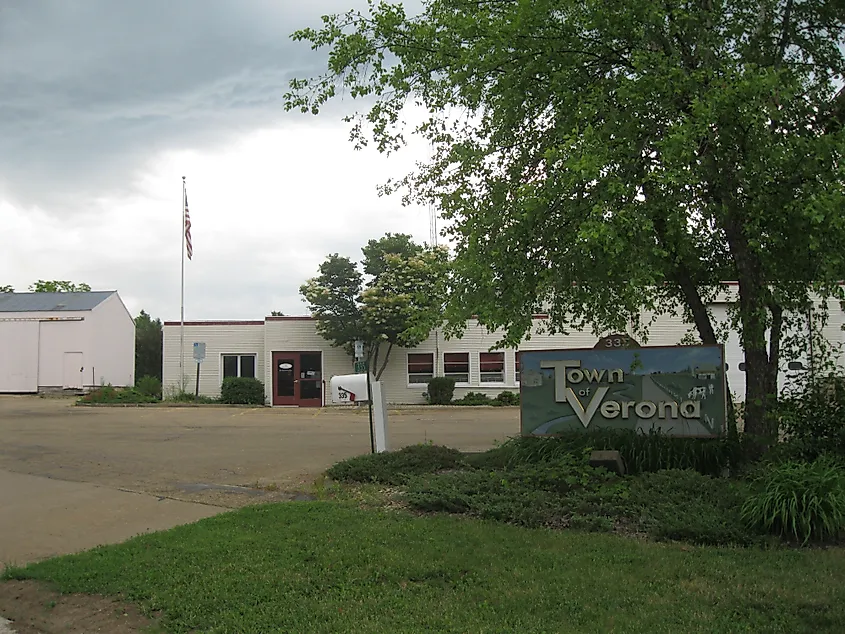
Town hall and sign in Town of Verona, Wisconsin.
The town is crossed by the Military Ridge State Trail, a crushed-limestone path used by cyclists and runners moving between Dodgeville and Madison; the Verona segment runs parallel to Badger Prairie County Park, a wide open grassland area with an accessible playground and seasonal farmers market. The Sow’s Ear combines a yarn shop with a coffeehouse that serves drip coffee in hand-thrown mugs. Cahoots, located off Main Street, serves a basic breakfast menu and has operated with the same layout since the early 1980s. Just east of town, Fireman’s Park Beach provides swimming access and shaded seating along the Sugar River.
Waunakee
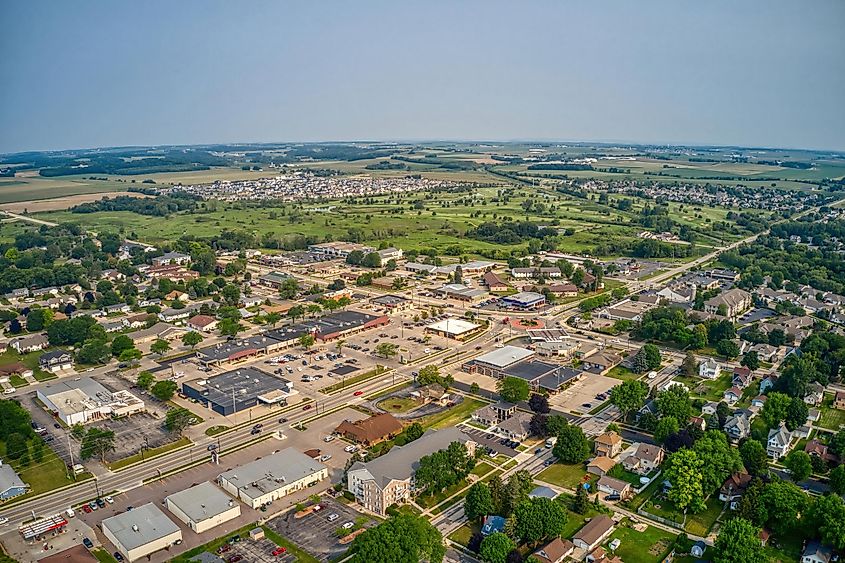
Waunakee markets itself as “the only Waunakee in the world,” a phrase trademarked by the village in the 1980s that reflects both its geographic uniqueness and civic self-awareness. Despite rapid suburban growth, it has kept its public safety record steady, violent crime rates for both aggravated assault and homicide remain below Wisconsin and U.S. averages across a five-year window. The police department is locally controlled, not contracted out, and its call volume reflects a pattern of traffic stops, welfare checks, and ordinance violations rather than violent incidents.
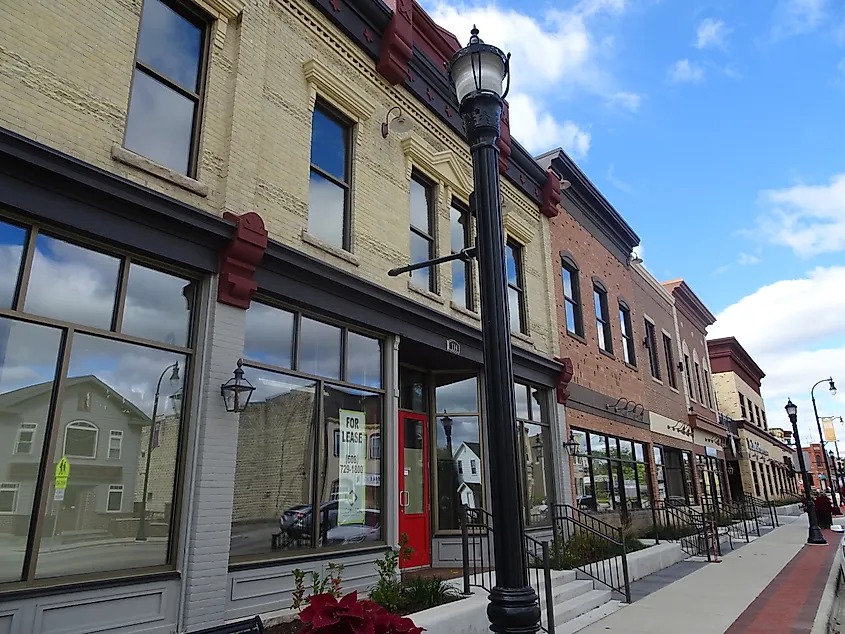
Schumacher Farm Park sits on 40 acres of restored prairie and 20th-century farmstead property, with walking trails and barn events that include threshing demos and bluegrass shows. Lone Girl Brewing Company, located near the Village Center, operates a rooftop deck and produces small-batch IPAs and Kölsch with rotating food truck pairings. M-N-M’s Coffee House serves scratch scones and pour-over coffee in a narrow brick building with mismatched chairs and a side-room library. Ripp Park covers more than 30 acres and includes a disc golf course, paved trails, and a fenced dog park.
Cedarburg
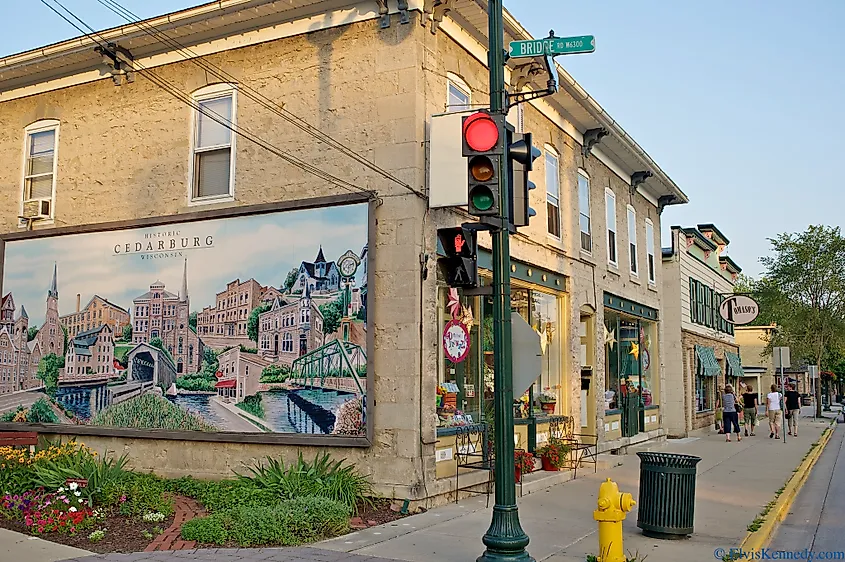
Cedarburg’s downtown is built almost entirely from locally quarried limestone and Cream City brick, making it one of the most intact 19th-century mill towns in the Midwest. Its historic district is listed on the National Register and has never been rebranded or redeveloped. The police department operates with full municipal control, and the city’s violent crime rates, particularly aggravated assault and homicide, have remained consistently below state and national levels for the past five years. Cedarburg reports few serious incidents annually, and its law enforcement approach emphasizes visibility, school resource staffing, and neighborhood patrols over reactive enforcement.
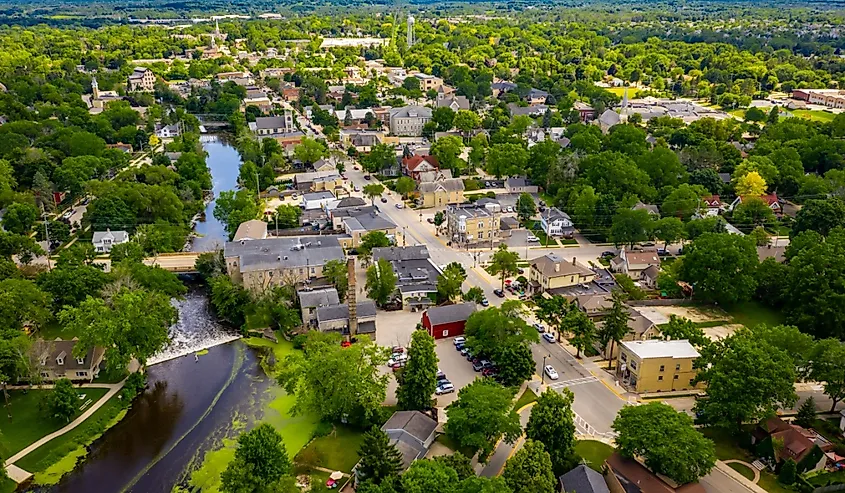
The Cedarburg Art Museum occupies a former 1898 mansion and hosts regional exhibits along with plein air painting events and sculpture gardens. Anvil Pub & Grille serves trout cakes and sweet potato fries inside a converted blacksmith shop built in 1868. Cedar Creek Winery, located in the old woolen mill, produces Marechal Foch and white blends using regional grapes and holds barrel tastings in its limestone cellar. Covered Bridge Park lies on the northern edge of town and centers around Wisconsin’s last remaining covered bridge, built in 1876 and preserved without relocation.
Port Washington
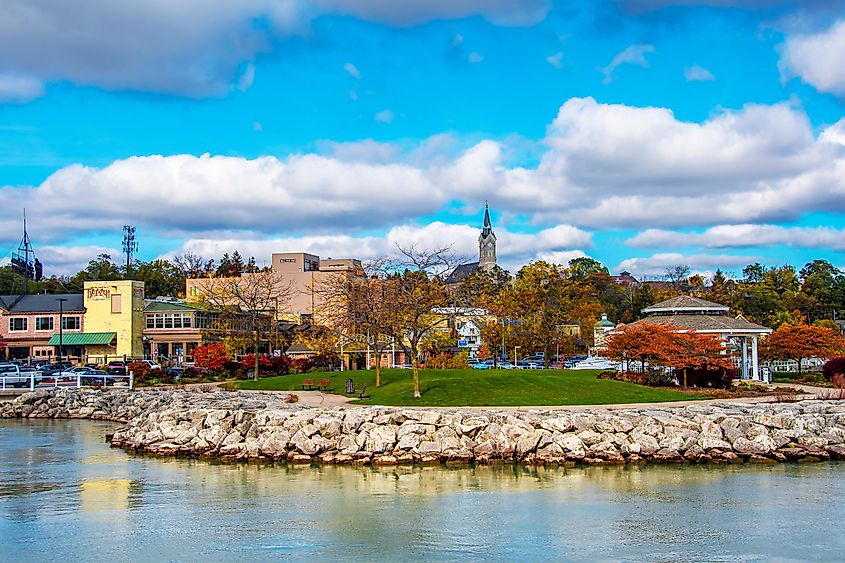
Port Washington’s harbor is protected by a 1935 Art Deco lighthouse that still functions and sits at the end of a long concrete breakwater, accessible on foot during low wind. The town’s topography drops steeply toward Lake Michigan, creating tiered neighborhoods with lake views and a shoreline that hosts fishing charters, a public marina, and a power plant that once heated the city’s outdoor pool with waste steam. Port Washington’s violent crime rates, specifically aggravated assault and homicide, have remained low and stable over a five-year period, with annual police reports showing minimal fluctuation and few serious incidents.
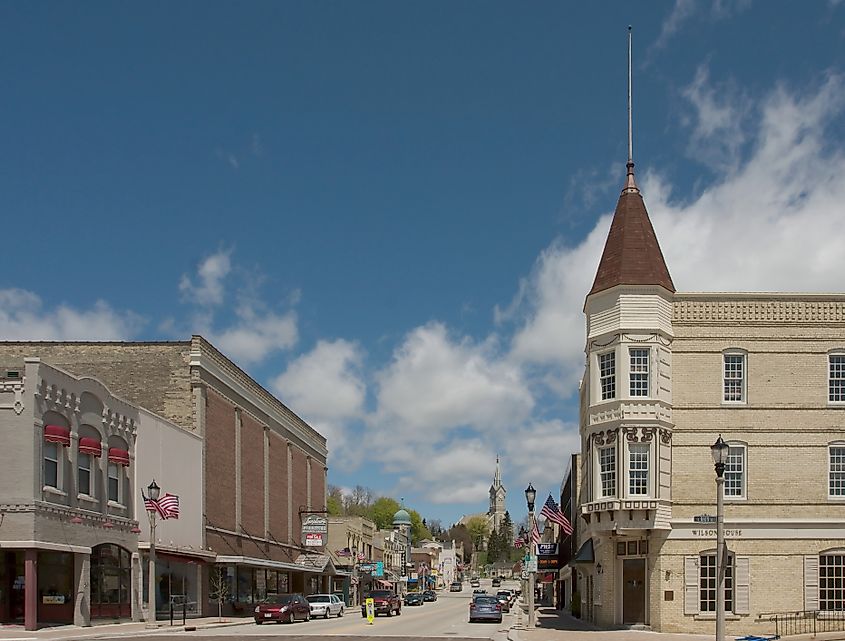
The 1860 Light Station and Museum sits on St. Mary’s Hill and maintains its original tower and keeper’s quarters, restored with Federal-era furnishings and maritime charts. Java Dock Café serves espresso and breakfast sandwiches in a harborfront space with wall-length windows facing the marina. Inventors Brewpub operates on and produces Kölsch, porter, and house pretzels, with events held under a steel canopy overlooking the lake. Coal Dock Park offers a flat loop trail on a repurposed shipping site and connects to the South Beach bluff staircase.
Whitefish
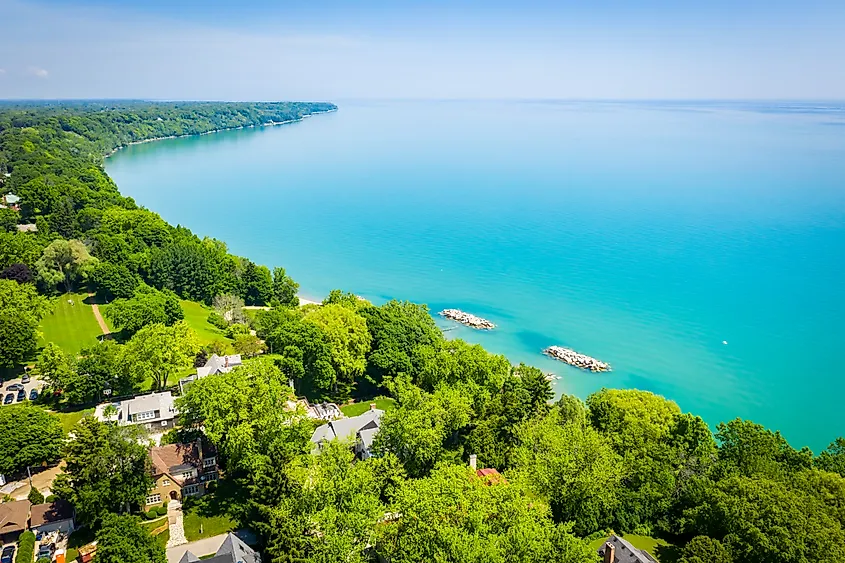
Whitefish Bay developed around the old Pabst Whitefish Bay Resort, a 19th-century beer garden and amusement park that drew visitors by electric rail from Milwaukee. Though the resort is gone, the village retains its orderly street layout and high residential density, anchored by prewar homes and mature tree cover. Whitefish Bay has one of the lowest violent crime rates in the Milwaukee metro area. Aggravated assault and homicide rates have remained well below state and national levels over a five-year span, with most police activity involving traffic enforcement and local ordinance issues. The department reports directly to the village board and maintains a strong neighborhood patrol model.
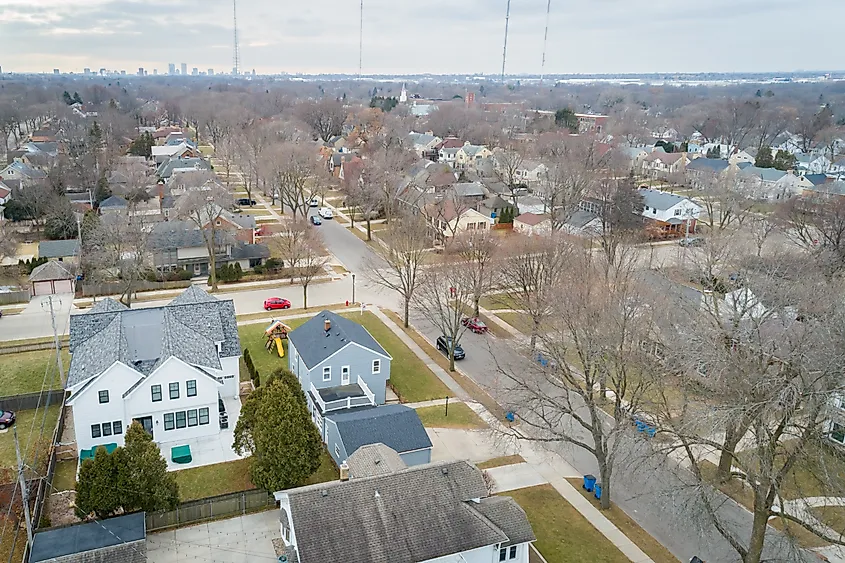
Big Bay Park sits along a bluff with sloping paths to a public beach and a concrete terrace used by sketch artists and kite flyers. The Whitefish Bay Library hosts author talks, music performances, and gallery displays inside a modernized 1960s structure. The Bay Restaurant, located on Silver Spring Drive, offers prix fixe tasting menus that shift monthly and include duck confit, seasonal risottos, and local trout.
Elm Grove
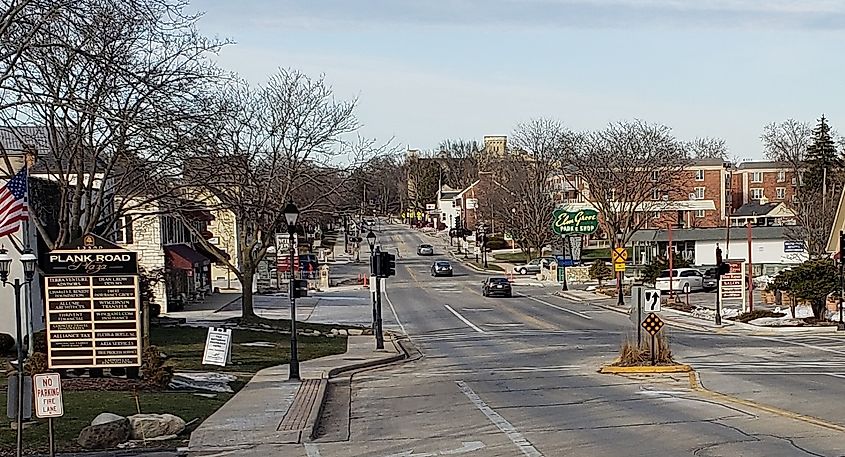
Elm Grove is built around a former rail corridor that now runs beneath Watertown Plank Road, where trains once passed under the village’s main intersection via a stone arch tunnel still in use today. The town was officially incorporated in 1955 to prevent annexation by Wauwatosa and has remained independent ever since. Its police department is village-operated and logs low incident volume. Over the last five years, Elm Grove has recorded violent crime rates, specifically aggravated assault and homicide, well below Wisconsin and U.S. levels, with most calls for service relating to property checks, alarms, and traffic.
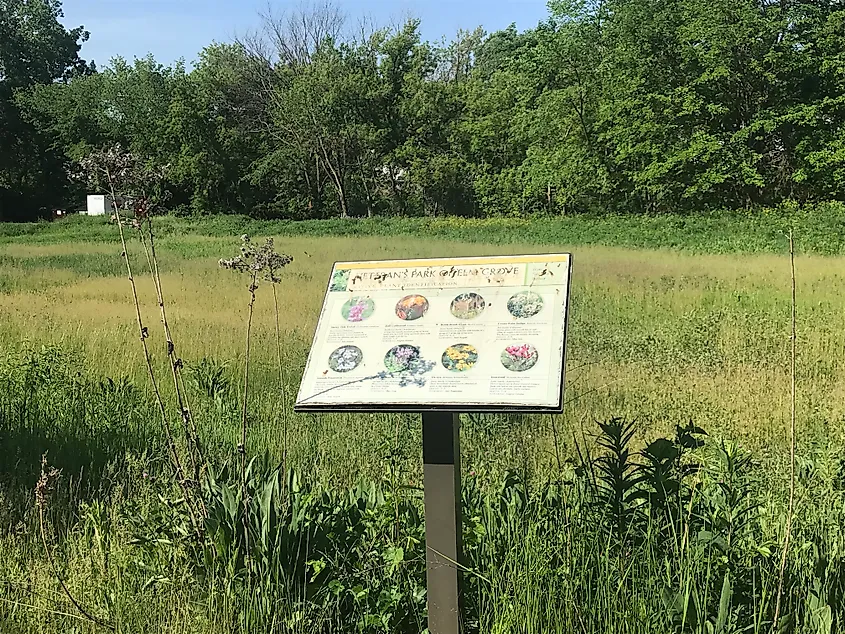
Elm Grove Village Park covers 60 acres and includes a pond, sledding hill, and footbridge crossing a spring-fed creek. Sunset Playhouse stages musicals and reader’s theater in a 300-seat space originally built in 1960 with community donations. Zisters on Watertown Plank Road serves Chicken & Waffles, Birria Benedict, and the “Elm Grove Chicken” sandwich. Additionally, O’Donoghue’s Irish Pub on Watertown Plank Road serves a Friday fish fry, an Irish Reuben, and broasted chicken.
Sturgeon Bay
Sturgeon Bay straddles the Sturgeon Bay Ship Canal, an engineered waterway completed in 1881 to connect Green Bay with Lake Michigan and create a continuous shipping route through Door County. The town remains a working harbor, with active shipbuilding at Fincantieri Bay Shipbuilding and a Coast Guard cutter moored year-round. Despite its industrial core, Sturgeon Bay reports violent crime rates, particularly aggravated assault and homicide, that consistently fall below both state and national averages. The police department is local, not county-contracted, and its case volume remains steady without major annual spikes.
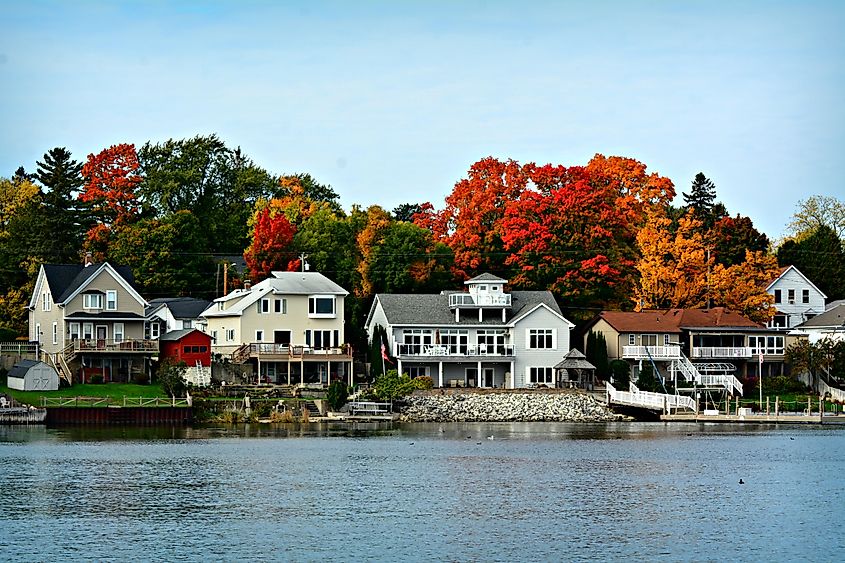
The Door County Maritime Museum sits along the canal and houses restored pilot houses, ship models, and a ten-story lighthouse tower with observation deck. Kick Coffee, located on 3rd Avenue, serves iced espresso and quiche inside a repurposed auto showroom with tin ceilings. Otumba Park includes a sand beach, swimming pier, and kayak rentals at the canal’s edge, with views of passing freighters. Scaturo’s Baking Co. & Café offers cranberry walnut bread, polenta cakes, and smoked salmon omelets in a white frame house one block from the water.
Across these eight towns, safety shows up in numbers and on the street: five-year violent-crime rates that undercut state and national baselines, and civic systems that work without drama. Parks, libraries, small museums, and modest businesses anchor daily routines. Street grids, lighting, and patrol models reduce friction. The throughline is predictability—services that match growth, and neighborhoods that hold their shape—making long-term settlement a practical, low-risk decision for families and retirees.








